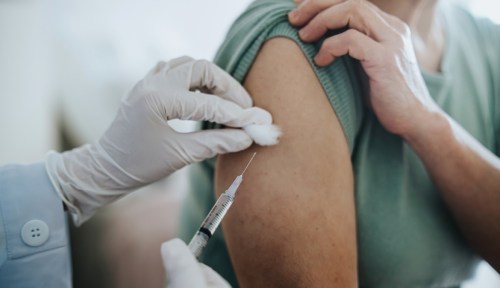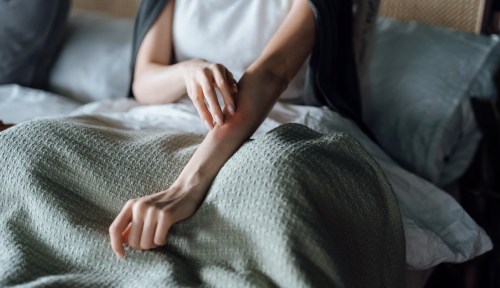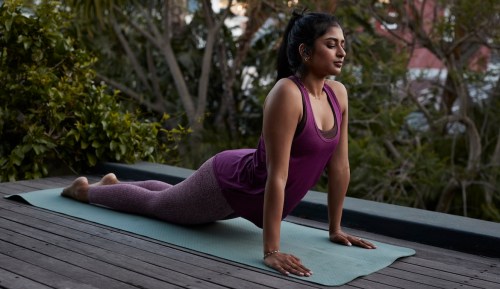The expert-approved tips Julianne Hough swears by for dealing with her endometriosis
How Julianne Hough treats her endometriosis pain through lifestyle changes.

iframe.instagram-media{position:relative!important;}
Your first period usually comes with a disclaimer from the older and wiser adults in your life: Along with the blood, there will be cramps and a whole lot of discomfort. So when Julianne Hough first started experiencing period pain as a teen, she simply chalked it up to being a not-so-fun part of womanhood.
“I just thought it was normal—what it is to be a woman,” Hough tells me. But the intense pain Hough was experiencing was far from “normal.”
Because Hough is an athlete, however, she’s always had that no-complaining attitude. And her self-proclaimed “tough cookie” ways led her to push through the pain until it became so unbearable that, one day in 2008, she was forced to leave the Dancing with the Stars set.
“The most empowering thing was being able to put a name to the pain.” —Julianne Hough
“Fortunately, my mother got me to go to the doctor to figure out what was going on,” Hough says. “I got the diagnosis [of endometriosis], and at first I was like, ‘I don’t want to have a disease.’ But the most empowering thing was being able to put a name to the pain and…be able to talk about what it is without feeling uncomfortable or like I’m complaining.”
Hough has now made it her mission to spread that feeling of empowerment to the 1 in 10 women of reproductive age in the United States affected by endometriosis, partnering with the SpeakENDO campaign in order to encourage women to ask their doctors about the condition. Hough says she isn’t afraid to talk about what used to feel like an awkward issue and wants to make sure other women know they don’t need to suffer through the pain in silence like she did.
“I know it sounds all hippity-dippity, but if you put love into your body, I feel like you can nourish it better.” —Hough
Talking about the disease is especially important because the symptoms women endure aren’t one-size-fits-all, says New York City-based OB/GYN Rebecca Brightman, MD. If you’re experiencing any pain *down there*—including “debilitating cramps, pain between periods, and painful sex”—Dr. Brightman says, it’s important to get some insight from a medical professional.
Together, you and your doctor can map out a treatment plan, which may include medication as well as lifestyle changes. And according to Hough, an effective course of action starts with making a major adjustment to your POV. “Don’t be afraid of having endometriosis. I don’t let it define me, but I own it because it’s a part of me,” Hough says. “This is your body…Embrace it; love it. I know it sounds all hippity-dippity, but if you put love into your body, I feel like you can nourish it better.”
Want to feel your best while living with endometriosis? Here are some tips, straight from Julianne Hough and other endo experts.
1. Watch what you eat
Hough says a big part of healing has been making sure she’s nourishing herself with the freshest, healthiest options whenever possible: “I definitely watch what I eat a little bit more and try to pick more nutritious foods, like healthy fats and not a lot of sugar. I don’t always succeed, but I try,” she says.
2. Sip on green juice
After being diagnosed with endo at age 34, holistic nutritionist Daphne Javitch of Doing Well began juicing every day. “I would do intermittent fasting with green juices in the morning until lunch, sometimes even until the afternoon,” she says. “The reason that’s so powerful is when your body isn’t working on digesting food, it’s working on healing, regenerating, and rejuvenating.”
According to Javitch, the benefits of this practice extend beyond managing symptoms of endometriosis. “When you’re dealing with a health issue, the more you can give your body a break from dealing with all the inflammation that comes into your body when you eat something, the more healing you’ll be able to do. You’re still getting nourishment but you’re not eating, so it’s not activating digestive energy,” Javitch says.
3. Stay active
Hough is a dancer, so moving her body as much as possible is a must: “I’m a very active person, so I find working out and having blood flowing makes me feel better,” she says. And aside from the physical benefits, Dr. Brightman notes that a sweat sesh is also good for your emotional health when coping with your endo. “It raises endorphins, and endorphins are feel-good hormones that make you feel great,” she says.
4. Add some heat
Some days you’ll be feeling great, and others you won’t even feel like moving. When Hough’s feeling low, she takes a page from your mother’s period-management handbook. “I always carry around a hot water bottle like a baby,” she says.
5. Let it flow
Another important thing Javitch did to heal was make sure everything was moving properly in her body. “When you think about endometriosis, you’re thinking about tissue and blood collecting and becoming fixed outside your uterus. Stagnation is stored disease, but flow is vitality and health,” Javitch says. “I implemented and incorporated a lot of tools into my lifestyle that encouraged flow through the body. I did a lot of eating that promoted the most efficient digestion, did rebounding on the mini trampoline, used the infrared sauna for lymphatic flow, did colonics for colon flow, daily skin brushing—you name it.”
This is the wellness treatment Julianne Hough swears by for her dogs. And, check out the advice that led her to wellness in the first place.
Sign Up for Our Daily Newsletter
Get all the latest in wellness, trends, food, fitness, beauty, and more delivered right to your inbox.
Got it, you've been added to our email list.










